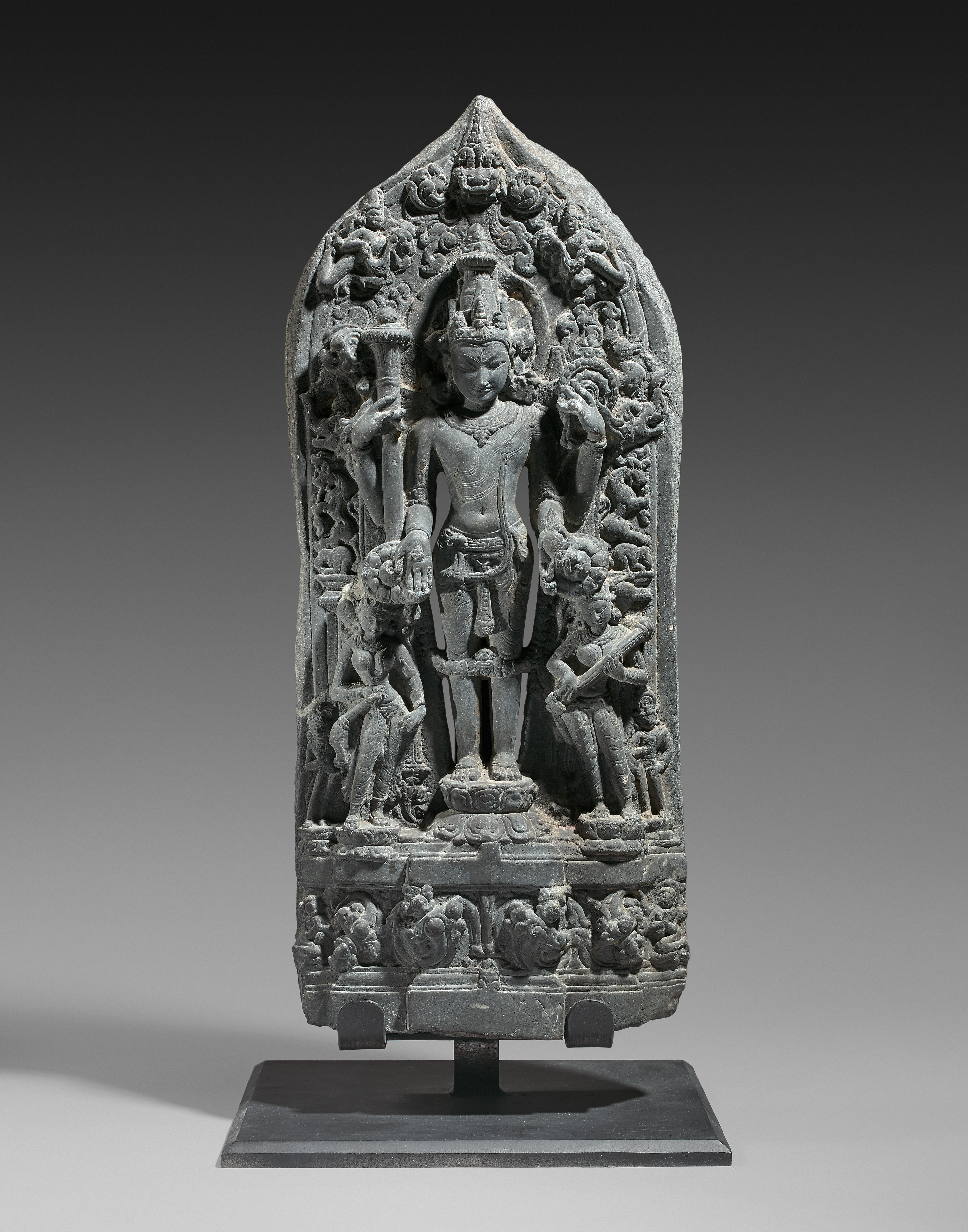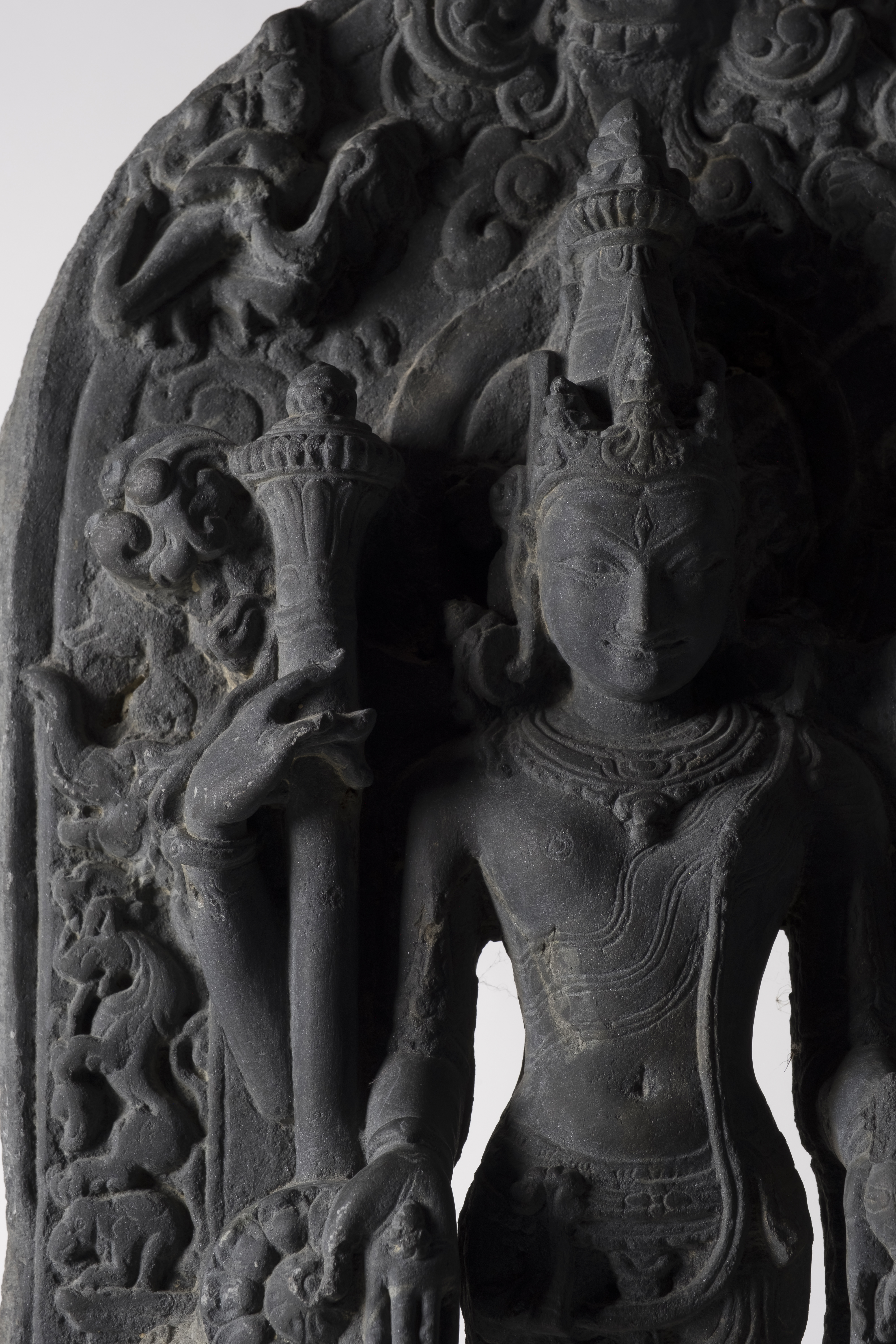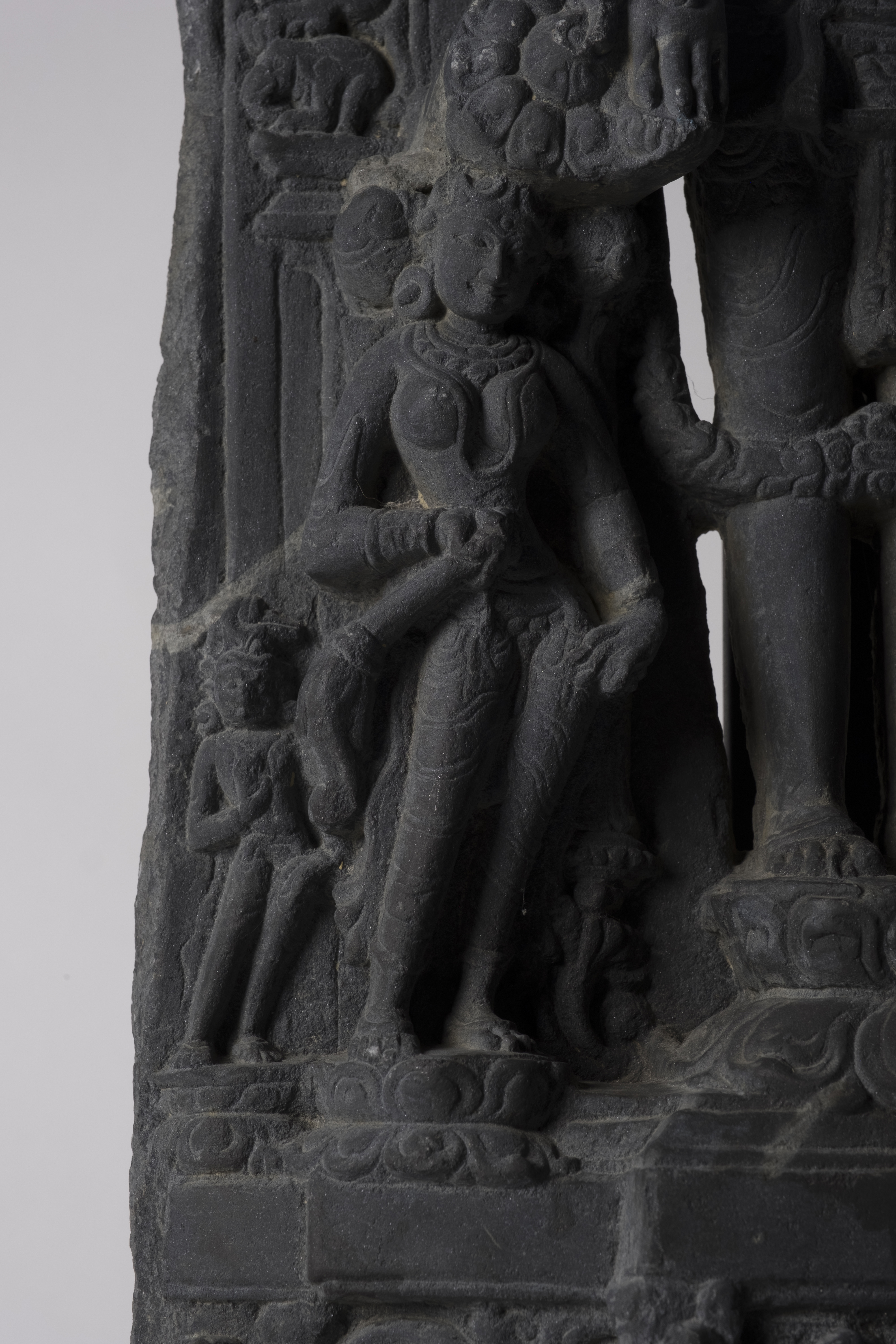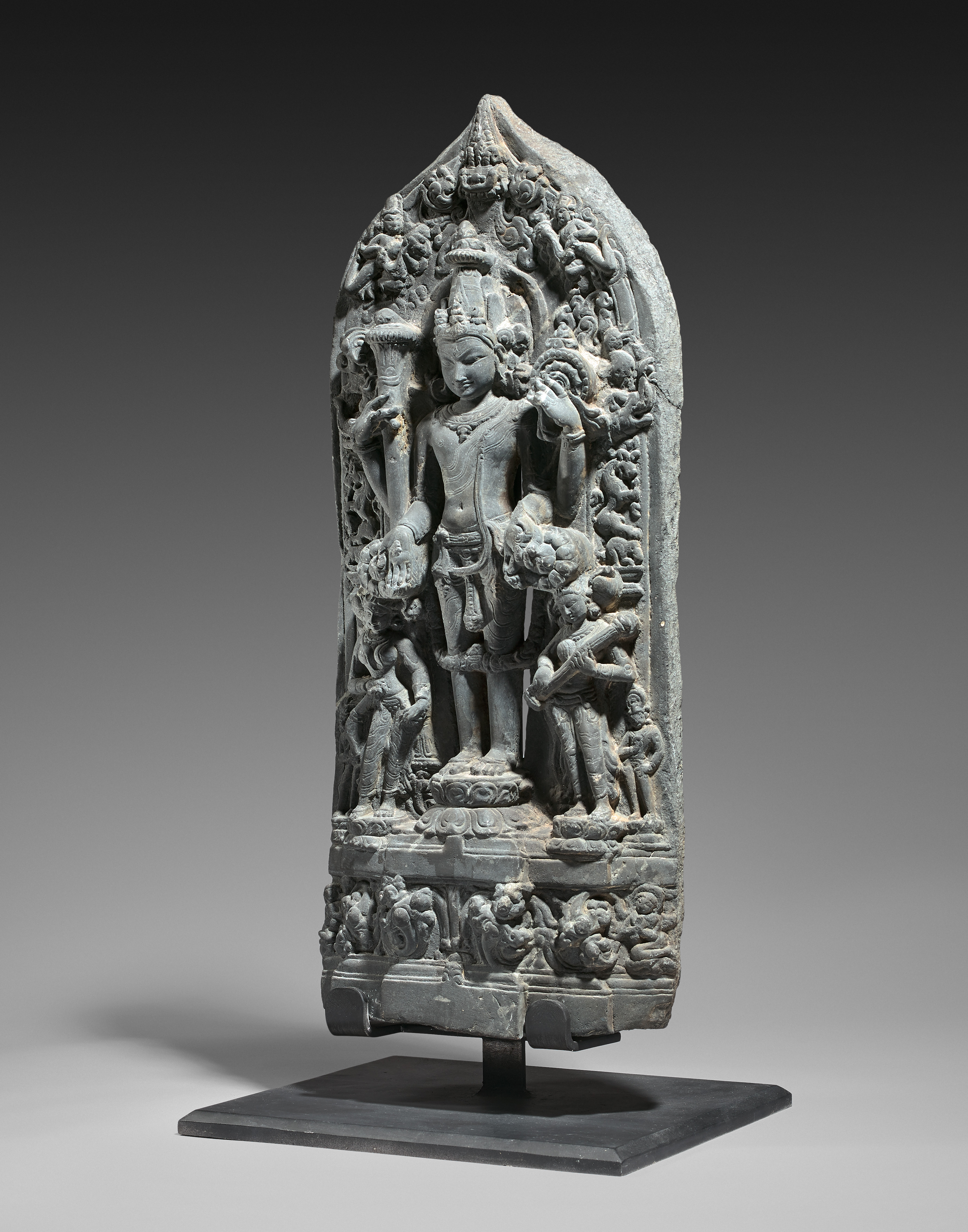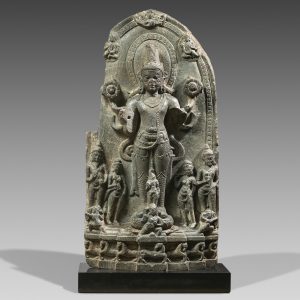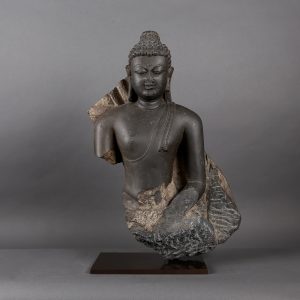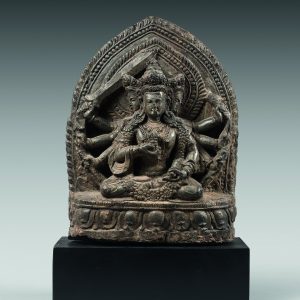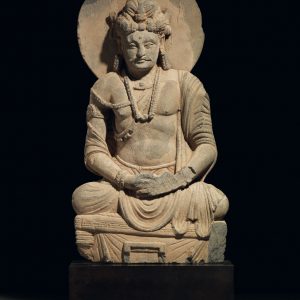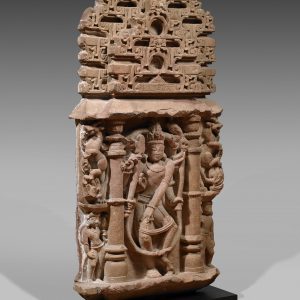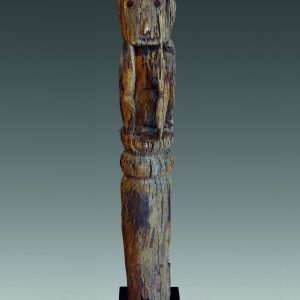Pāla stele of Viṣṇu Vasudeva
Phyllite stone
Northern India
Circa 12th century, Pāla period
H. 61 cm
Description
This stele presents the characteristic iconography of the powerful Viṣṇu Vasudeva, supreme Hindu god wearing the royal tiara (kirīta), who is figured here.
One recognizes its attributes, finely represented in the respect of the classic iconographical codes: in his raised hands, the mace (gadā) and the discus (cakra). With his other hands he makes the gift-giving gesture (varadamudrā) and holds the conch (śaṅkha).
Contributing to the general harmony, Viṣṇu is surrounded by his two wives, carved in dynamic postures, contrasting with the formal rigidity of his figure.
On his right, the goddess of good fortune Lakṣmī holds a fly-whisk, the symbol of royalty and happiness. On the other side, Sarasvatī, goddess of knowledge, wisdom and the arts, can be recognized by the string instrument (vina). Two small figures next to the goddesses represent personified attributes of Viṣṇu.
The god is wearing many jewels and this abundance of details is found throughout the decor. Whether they are rampant lions (vyālaka) depicted on both sides atop elephants, the kīrtimukha prophylactic mask at the top, the two flying celestial creatures with garlands (Vidyādhara), or floral scrolls, all these decorative elements contribute to a rich, fluid and elegant composition.
The multiplication of parts setting back from the central section in the lower part, the pointed top of the stele and the openwork behind the main figure are all stylistic characteristics specific to the stelae of the 12th century and made in North-Eastern India.
Provenance: Acquired by the family in Asia between the 40’s and the 60’s.

